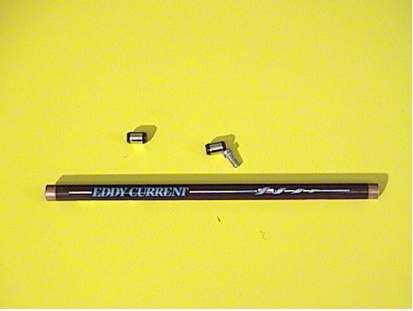Induced eddy currents make a magnet seem to take forever to fall through a copper pipe.
Watch Video:
Possible Incorporated Topics:
- Magnetic field
- Lorentz force
- Kinetic Energy
Theory:
When electrons move relative to a magnetic field, they experience a force called a Lorentz force. When a magnet passes through a metal tube, the free electrons in the metal are forced in circular paths, or 'eddies'. It, of course, takes energy to cause the electrons to move like this. If there were no copper pipe, the magnet would acquire kinetic energy as gravity caused it to fall (that is, it would speed up). When it falls through the pipe, however, some of the energy goes into creating the eddy currents, and the magnet falls much slower
Apparatus:
- a copper tube and two small metallic cylinders, one magnetic and the other not (sold as a package)
- one steel bolt

Procedure:
- Touch the non-magnetic cylinder to the bolt to show that it truly is not magnetic.
- Then touch the magnetic cylinder to the bolt to show that the bolt is attracted to the magnet.
- Allow both cylinders to drop through the copper tube, one at a time.
- Observe that the magnetic one takes much longer to fall through!



